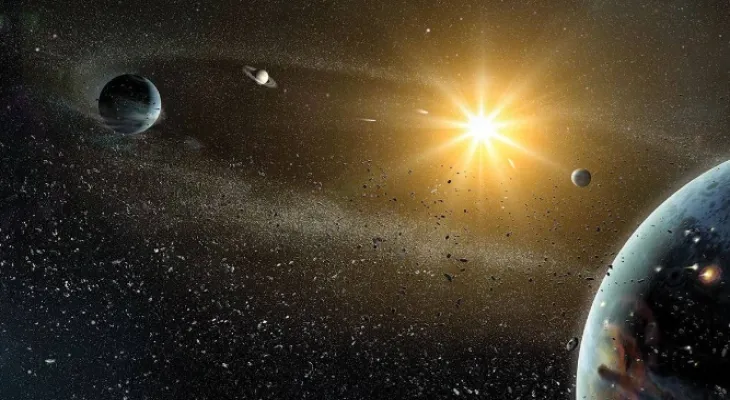Search here
Newspaper
Search here

Arab Canada News
News

Published: April 1, 2024
There are scientific facts that humans cannot understand, and every day there are scientific facts and miracles that humans discover. Perhaps the latest of these facts is what a scientific team interested in studying stars and celestial bodies has reached: evidence proving that one out of every 12 stars in this universe has previously swallowed one or more planets or even parts of planets.
The international team from the "Astro 3D" Research Institute in Australia, specializing in astrophysics, was studying the phenomenon of twin stars, which refers to stars that are gravitationally bound and orbit each other at wide distances, when they observed some differences in the chemical composition of these twins. Usually, these stars appear to the naked eye in the darkness of night as a single star, but upon closer examination through precise space telescopes, it becomes clear that they are in fact two separate stars.
According to scientific theories, twin stars form from the same cosmic clouds, so their composition must be identical. However, the research team found a chemical difference in 8% of the twins studied. Cosmic or molecular clouds are large areas of gas and dust located in the spaces between star systems, primarily composed of hydrogen and some other elements like helium, nitrogen, and carbon.
According to the study published in the scientific journal Nature, the research team concluded that the reason for this difference is that one of the twin stars had previously devoured one or more planets or even parts of planets, leading to a difference in its chemical composition from its adjacent twin.
Researcher Fan Liu from Monash University in Australia and head of the study said: "We looked at twin stars that move together; they are born from molecular clouds, so they must be identical, but thanks to highly accurate analytical capabilities, we were able to observe chemical differences in the composition of these twins."
He added in statements to the scientific research website "SciTech Daily" that "this difference provides strong evidence that one of the stars swallowed planets or pieces of planetary debris, which caused a change in its composition."
The research team was able to reach these results thanks to huge databases collected by the Magellan Space Telescope, the European Southern Observatory telescope, both in Chile, and the Keck Telescope located in the U.S. state of Hawaii. The researchers found that this scientific phenomenon was repeated in 8% of the 91 pairs of stars studied, but the striking aspect of this discovery was that these stars were still young, not stars nearing the decline phase known as the red giant.
The term red giant is used to describe stars that have nearly depleted their hydrogen reserves and have started fusing their helium into heavier elements like carbon and oxygen, which leads to the star's expansion, cooling, and turning red.
Fan Liu explained that "this research differs from previous studies that dealt with massive stars capable of swallowing the surrounding planets when they become giant glowing balls of fire." He pointed out that there is some uncertainty about whether these stars swallow entire planets or just parts of planets floating in space, and he continued that both scenarios have the potential to be verified.
He added that "the scenario of the star swallowing a whole planet is the most likely for us, but we cannot rule out the possibility that these stars have swallowed parts of the rotating planetary disks surrounding the stars when they were still young, which are cylinders of dense gas and dust surrounding newly formed stars."
The research team confirmed that these findings have wide-ranging implications for the long-term evaluation of solar systems, explaining that during the first 100 million years of any star system's formation, scattered incidents related to stars swallowing planets may occur. During this period, central stars often swallow the surrounding planets. However, such incidents’ effects may be difficult to observe after several billion years, and thus chemical composition changes in stars could be due to later incidents in their lifecycle.
Yuan Xin Ting, an assistant professor at the National University of Australia and a researcher at the Astro 3D Institute, said: "Astronomers used to believe such events were impossible in reality, but through the observations from this study, it has become clear that although the likelihood of these phenomena occurring is not high, they are indeed possible, which opens the door for studying new theories to explain the evolution of planets and stars."
The SciTech Daily website quoted researcher Emma Ryan Weber, director of the "Astro 3D" Institute, as saying, "These results have helped clarify the big picture of the institute’s main research goal, which is to study the chemical evolution of the universe, and they also highlight the distribution of chemical elements as they travel through space, including the elements consumed by stars.
Comments